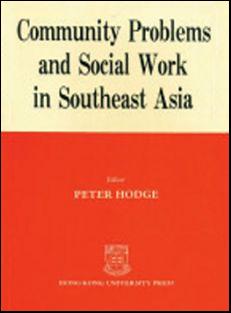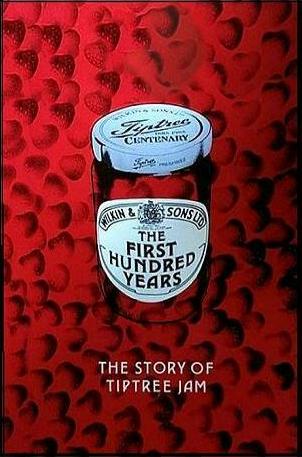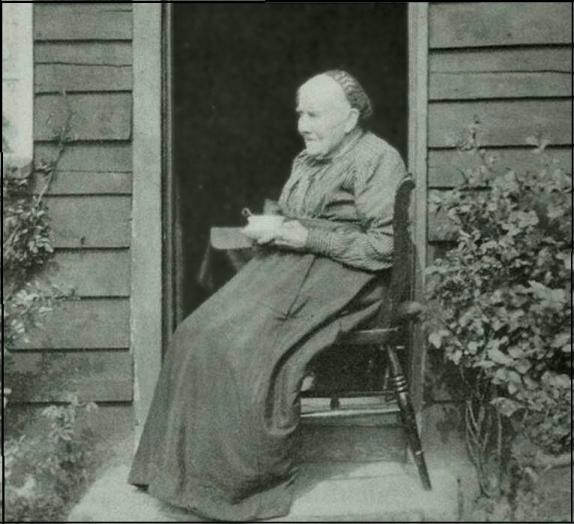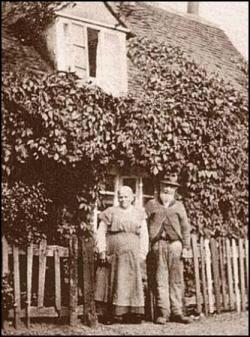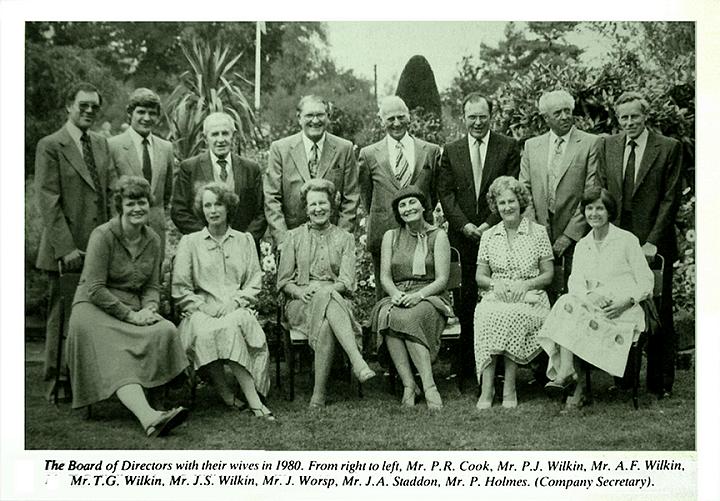1913
- 1994

Maura Benham was born into a
very well known Colchester publishing family. Her father, Sir Gurney Benham,
was a Mayor of Colchester and editor of the Essex County Standard. Maura
attended the London School of Economics and became Chief Almoner in Nottingham
City Health Department. From there she went to Hong Kong to be Principal
Almoner. On retirement Maura took a cottage in Church Street, Goldhanger which
she named Tayspils, (now called Lavender Cottage) and undertook
voluntary work involving mental health. She also enthusiastically participated
in village and Church life.

Tayspils, Church St.
Maura was author of these
publications:
1963 An Introduction To The
Birds Of Hong Kong
1970 History of St.
Peters Church
1977 Goldhanger an
Estuary Village
1980 Medical Social Work in
Hong Kong
1985 The Story of Tiptree Jam
- the First Hundred Years
1991 Byrthnoth’s Last Journey:
from Maldon to Ely
1993 The Story of the Wesleyan
Chapel in Goldhanger
________________
The diaries of Eric Rudsdale, who was curator Colchester Castle museum
during World War 2, were published in 2011 with the title of: Journals
of Wartime Colchester. The book has many references to Maura as a young
girl and friend of Rudsdale at the time she was living with her family in
Colchester. Parts of the book also serialised at… http://wwar2homefront.blogspot.co.uk

During World War 2 Maura was in her mid twenties. Here are some extracts
from the book…
Maura
Benham was the daughter of Sir
William Gurney Benham. She worked at Paddington Hospital in London. Sir William
Gurney Benham, was the proprietor of Benham & Co, printers of Colchester,
and editor of Colchester’s local newspaper, the Essex County Standard. Benham
was also Chairman of Colchester Corporation's Museum Committee.
28th
July 1940 - A
beautiful fine morning. Took the trap to Benham’s, looking very shabby, and
unpolished, but can't be helped. Collected Maura
and went off behind Lexden park, through a “mock-war”, during which we got
stopped by guards and had moments of awkwardness as Maura
had forgotten to bring her identity card. However, her natural charm got us
past all obstacles. We went out to Rock Farm, Berechurch, and had lunch in the
same field where we went before. The sun shone, sheep were grazing by the Roman
River, and there was not a ‘plane in the sky. It was delightful.
28th August 1940 - An alarm today at 1 o’clock, while I was alone at the Castle. I
had to remain on duty at the gate, and so was prevented from seeing a plane
brought down near West Bergholt. Many planes were over tonight, and bombs could
be heard in the distance. No sirens. Maura Benham came to the Castle with me this
evening, and helped to clean my Mail-Phaeton.
22nd September 1940 - Got home at 2.15am. Slept until 10.30.
Went down to Bourne Mill and met Maura,
who had news from London. She appeared quite unconcerned from her experiences,
and I was glad to hear that so far the damage in Paddington district has been
very small. Neither the station, St. Mary’s Hospital, nor her “garette” have
been hit. She seemed to have no fear of raids.
28th December 1940 - Maura Benham and her sister came to see me at
the office this morning, looking very well. The raids do not appear to affect Maura.
12th January 1941 - Lay late, being my last chance for a while. Breakfast, and then
went straight to the stables, loaded hay, fetched Bob, met Maura B. who looked very attractive, tall and
stately, in a new grey overcoat, a yellow scarf, red head band, and new heavy
shoes. We carted the hay, and then drove Hampshire’s little grey to Rowhedge
and back, had a very jolly time. She still keeps very well, and there has been
no further bombing in Paddington.
6th April 1941 - Down at Bourne Mill all morning and most of the afternoon with Maura Benham, who seems to really enjoy
paddling about in the mud and water there. We had hoped to have a bonfire, but
unfortunately the sticks were too wet and would not burn. We had a lunch of
sandwiches, sitting in the old granary, which, although a cold wind was
blowing, was quite enjoyable. Maura just
the same as ever.
31st May 1941 - Work on the [Castle] Monument Room was finished today, and they appear to have made a very good job of it. Maura Benham came in today, looking very tall and gorgeous, with a scarlet turban round her dark hair.
13th January 1942 - Surprised to see Maura Benham
come into the office this morning, looking very well after her illness. Had tea
with her. She seemed in rather an odd mood. Talked of joining the A.T.S. I
tried to reason with her, but without success. She said she felt the call of
conscience, duty, etc.
________________
an
extract from… www.questiaschool.com/read/6448768?title=Contributors
Maura Benham undertook her social work education and training at
the London School of Economics and Political Science, and at the Institute of
Almoners from 1934-37. She then worked as an Assistant Almoner first at King's
College Hospital, and then at St Mary's Hospital, Paddington, London, before
moving to be Chief Almoner with the City of Nottingham Health Department in
1943. She remained in Nottingham for ten years before coming to Hong Kong in
1953 as the Principal Almoner, later called Principal Medical Social Worker, of
the Medical and Health Department.
In 1967 she retired to England and has been engaged ever since in
voluntary social work, particularly concerned with mental health and work with
individuals in problematic situations. For three months in 1970 Maura Benham
undertook an assignment with the Ugandan National Association for Mental
Health, sponsored by the World Federation for Mental Health and the British
Epilepsy Association.


an
extract from…http://sunzi1.lib.hku.hk/hkjo/view/44/4401062.pdf
Miss
Benham's book is a worthy successor to Dr. Herklots' Field Note Book and The Birds
of Hong Kong, first published in November 1946. That was a book to which many
owe a great debt as it enabled them to start or continue in Hong Kong that most
fascinating pursuit which gives increasing pleasure as one's knowledge grows.
Before that date it was extremely difficult to identify Hong Kong birds as the
only really good book available was La Touche's Birds of East China which
described in minute detail the plumage of over 700 species but did not indicate
which of the species occurred in Hong Kong and did not give a clear idea of
what the various species looked like in the field. Dr. Herklots' book gave
field descriptions of Hong Kong birds for the first time. It is however now out
of print and also rather out of date in that it is based on observations ending
in 1948, since when not only have a large number of new species been recorded
but a tremendous development of roads and buildings has taken place. This had
led to considerable changes in the distribution of birds within the colony.
Miss
Benham has wisely restricted the number of species described (98 out of a
possible total of about 340) and this makes her book of greater value to the
reader for whom it is intended — the visitor or newcomer to Hong Kong and the
beginner of all ages. It cannot have been easy to decide which species to leave
out and the author has obviously taken into account the fact that visitors or
newcomers from Europe will probably have a copy of the now famous Field Guide
to the Birds of Britain and Europe which includes many of the birds, such as
the Waders, which occur on passage in Hong Kong. All the birds which a newcomer
or beginner is likely to see or hear are, however, included except for the
rather surprising omission of the Indian Cuckoo. The descriptions of the
ninety-eight species are clear and concise field descriptions and in; giving
the length of a bird (from tip of bill to tip of tail) mention is made of the
length of the bill, a useful bit of information often omitted in bird books.
Also included are brief sections on Habits (again often omitted in bird books),
Voice (if heard in Hong Kong), Habitat, World Range, and Records for Hong Kong
(where, when and how frequently seen)…
…It has been a pleasure to review this excellent little book on which Miss Benham, her collaborators and her publishers are to be congratulated. If you already know something about birds in another part of the world it will enable you to get to know the rich variety of birds to be found in Hong Kong. If you know little about birds but would like to know more it will almost certainly entangle you irretrievably in an absorbing hobby which will give lifelong pleasure.
________________
The Forward from: An Introduction to the Birds of Hong Kong
This book has been compiled because of the demand made particularly by schools and young people's organisations for a simple introductory handbook with which to identify Hong Kong birds. All previous books were out of print, and although the Hong Kong Bird Watching Society had for some time had dreams of a volume covering all the birds seen in Hong Kong and fully illustrated in colour, it was decided that the need for a small inexpensive book was urgent, and must somehow be met.
Fortunately much of the work had already been done. Captain (now Major) A. M. Macfarlane had surveyed the field in a lecture delivered to the Hone? Kong Branch of the Royal Asiatic Society in September I960, and later printed in the Society's Journal, and Mr, J, L, Cranmer-Byng had written on bird watching areas and Mr D. S. Hill on binoculars in the Hong Kong Bird Report for 1961, published by the Hong Kong Bird watching Society, They readily agreed to their articles being used in this book, Mr. Cranmer-Byng re-writing and bringing up-to-date his account of bird watching areas. In addition, an annotated check-list had been made by Captain Macfarlane and Flight-Sergeant Macdonald, and it is on this list and numerical system that the Field notes herein are based, and from which the status and Hong Kong records of the birds have been taken.
The choice of birds for inclusion in these Field notes, approximately one third of those recorded in Hong Kong. had to he a personal one, and may not satisfy every reader; it was hard to leave out so many, but inevitable in so small a book.
The main source of
information for birdwatchers in Hong Kong has for many years been the works of
Dr. G. A. C. Herklots, and this handbook could hardly have been written without
the details which he recorded during the years 1928 to 1948, The illustrations
winch Commander Hughes has generously allowed to be used were first produced in
Dr. Herktots' book Hong Kong Birds, published in 1953.
The Hong Kong Branch of the
Royal Asiatic Society has kindly permitted the use of Major Macfarlane's
article.
Grateful acknowledgement is
made to the members of the Hong Kong Bird Watching Society for their advice and
encouragement, m particular to Commander E. D. Webb and Mr, J. L. Cranmer-Byng
who checked the descriptions of birds and added lo them from their personal observations.
Maura Benham.
Hong Kong, April, 1963.
________________
|
|
In 1977 Maura published: Goldhanger - an Estuary Village, it is the first and only published book on the history of Goldhanger. The complete book is available to read on-line in this website at… |
________________
In 1980 Maura wrote a chapter under the heading of: “Medical Social
Work in Hong Kong” within in the book entitled: Community Problems and
Social Work in Southeast Asia…
|
|
The book was published in 1980 by the Hong Kong University
Press. Here is an extract from the
start of Maura’s 20-page chapter… |
Medical
social work began in Hong Kong just before the outbreak of World War II, and some
seventeen months before the Japanese invasion and occupation. Sir Selwyn
Clarke, in his contribution to the booklet issued on the occasion of the Hong
Kong Almoners Silver Jubilee in 1964, wrote of this time (when he was Director
of Medical & Health Services), '. . . the Colony suffered from a serious
shortage of hospital facilities, it was subject to devastating epidemics of
infectious disease often brought in by the increasing flood of refugees from
Japanese-occupied China, and nutrition, housing and hygiene among the large
proportion of the population, then numbering about 800,000, was of a sadly low
standard.
Deaths
from malnutrition were by no means rare, one in three babies born died before
they were a year old, and thousands lived on street pavements or in shacks on
the hillside, lacking water supply and sanitation of any sort.' There were not
many social agencies to help, at least as compared with the number that exist
today, but the Society for the Protection of Children, the Street Sleepers Society
and the Anti-Tuberculosis Association are mentioned in these reminiscences of
prewar days. Some social work, including a Probation Service, was also carried
out in the Secretariat for Chinese Affairs, and several old-established
orphanages and homes and schools for the blind and deaf were in operation. The
Po Leung Kuk and the Tung Wah Hospitals were well supported by the Chinese
Community.
Such
was the situation when Miss Watson, an Almoner with English training and
experience, came out to start medical social work in the Government hospitals
and clinics in 1939. Miss Watson had need of the kind of sensitivity to
situations which enables social workers to know how and where to use their
particular skills as she explored a setting which differed so greatly both
medically and socially from what she had known before. Again, after the
Liberation there was strenuous re-thinking to be done, and so in the twenty
years that have followed and in the years that lie ahead it seems to me that a
constant sensitivity to situations must be of paramount importance. One must
remember that although in all forms of social work Hong Kong must draw
voraciously on the experience and the experiments of other countries, there can
be no slavish following of fashions unless these fashions can really prove
their worth in the Hong Kong setting…
________________
|
|
In 1985 Maura published… The
Story of Tiptree Jam, the First Hundred Years Below are some extracts and photos from the book relating to Goldhanger. SSW is Stanley Wilkin who lived at Bounds Farm from 1920 to 1946. J.S Wilkin is John Wilkin, Stanley’s son who lived at Bounds most of his life. |
Acknowledgments
This
booklet could not have been written without the drive and enthusiasm of Mr J.S.
Wilkin who knows the story well and loves it. He provided most of the source
material and worked with me on the production. Together with his wife, he
sorted out the firm's vast collection of photographs and other records from
which we have selected most of the illustrations. Mr P. Holmes, the Company
Secretary, kindly entrusted me with Annual Reports for nearly one hundred
years.
I
am also grateful to the Chairman, Mr T.G. Wilkin, and to all the Directors for
their written and verbal contributions, and for their checking of the script.
Several retired employees have talked with me and added to the picture with
their reminiscences.
Maura
Benham
…The
two brothers were well established by this time. CJW remained unmarried and
lived at 'Frewlands. He liked to travel in a brougham, probably inherited from his
father, driven by a coachman named Harry Edwards in a livery of green top coat
and bowler hat. He would use the brougham to drive down to Mersea, where he had
a house, a yacht "Heron", and a smaller boat "The Crab"
which was a great favourite. When he wanted peace and quiet he went to his
house-boat moored by Ray island, off West Mersea. SSW married in 1902 and went
to live at Gatehouse Farm. He had by this time worked a fair way towards
self-sufficiency, and had built up a herd of Guernsey cows with a milk round in
Tiptree. He reared some 3,000 black pigs, with the overseas sales mentioned in
CJW's Report for 1920. His flock of sheep produced not only meat for the table
but also wool, some of which was spun by his wife and knitted into pullovers
and woolly caps for the family. Bees provided honey. He kept fine horses and
loved riding and hunting.
…On
the death of their father in 1913 the two brothers had become the sole Managing
Directors of the firm, and there were at that time no other members of the Wilkin
family in the business. Disagreement arose between them in the early 1920's,
CJW wanting the emphasis in the farms to be on growing fruits for the factory,
while SSW wanted more livestock. It was a serious quarrel, and SSW decided to
withdraw and buy Bounds Farm, recently acquired by the Company, but CJW was so
upset by his departure that negotiations became impossible. Finally SSW moved
into the farmhouse, renting 11 acres for a poultry business and managing the
farmland with a salary appropriate to a farm manager.
…There are memories of the 1920's. They
recollect the competitions to estimate the weight of the crop growing in a
field, and the value to the Company of having such accurate estimation. The
best estimators within living memory seem to have been S.S. Wilkin, and Charles
Ruffell, foreman at Park Farm and later at Bounds Farm, whose accuracy was
uncanny. “They seem to have lost the knack now." They remember strawberry
seasons when picking started a 4 a.m. On one occasion at Goidhanger two pickers
turned up with candles! Jam making started at 8.30 a.m. Sometimes by 2 p.m.
they were blowing the hooter to stop the pickers, because they had as much
fruit as they could handle.
|
Mrs Barnard strawberry picking at Goldhanger |
Mrs Barnard outside her cottage in Goldhanger |
|
early Fish St strawberry pickers with a candle |
“the old road-mender” and his mate at Goldhanger |
|
The board of directors in 1980 with John & Daphne Wilkin in the centre |
|
________________
|
|
In 1991 Maura published… Byrthnoth’s
Last Journey: from Maldon to Ely The Introduction… the purpose of this
booklet is to interest the visitor in the manner in which Byrhtnoth's body
may have been taken to Ely for burial after the Battle of Maldon, and the
various routes which might have been taken in the country through which the
journey was made. We have no evidence to turn to, but there is considerable
scope for conjecture. While we have benefited from the information and
suggestions generously given by many more knowledgeable than ourselves, we
know there is much we may have missed. Our hope is that this booklet may be
helpful as an introduction for those who chose to make the pilgrimage and
explore for them-selves this stretch of country. |
________________
|
|
Maura’s last known publication was… The Story of the Chapel in Goldhanger, which was written in 1993. This 12-page booklet was produced with the help of John Wilkin, who had been very involved with the chapel in his youth. The booklet is now available online at… Story of the Chapel in Goldhanger |
________________
The picture and caption
below were published in the Maldon and Burnham Standard in March 1993
as part of an article entitled: Village Visit…meet
the locals of Goldhanger

Local Historian Maura Benham
stands by the old pump in the centre of the village she loves.
Miss Benham wrote a history
of Goldhanger in 1977 and is full of enthusiasm about its past.
________________
here is an obituary
published in the Essex County Standard in July 1994…
Maura Benham was youngest
daughter of the late Sir Gurney Benham, a former Mayor and High Steward of
Colchester who was for 60 years editor of the Essex County Standard. Her
brother was the late Hervey Benham, who took over the family business from his
father and eventually became chairman of Essex County News papers.
Miss Benham, who retired to Goldhanger, trained as an almoner and medical social worker and enjoyed a fascinating career in England and abroad before retiring from professional work. She then continued her voluntary work almost to the end of her life. Having started school at St Mary's in Lexden Road, Colchester, Miss Benham continued at Wycombe Abbey School and took social studies at the London School of Economics before training as a medical almoner.
She worked in the heart of London throughout the Blitz, dodging bombs with the rest of the staff at Paddington Hospital. Later she moved to Nottingham and became involved in the pioneer work going on in readiness for the introduction of the National Health Service and the Welfare State. Her next move as to Hong Kong, where she worked for the Government as principal medical social worker with the health department, responsible for training the Chinese almoners.
Miss Benham was assigned a staff of 18 of them and by the time she left 14 years later, the number had risen to 77. Although she was far away from the family newspaper business, her writing instinct was not entirely missing. And before Colonial Service regulations enforced her retirement at 55, she compiled a book on the native birds of Hong Kong. After four years back in Britain, Miss Benham was off again, this time helping develop the Ugandan Mental Health Association. She also found time to climb Africa's highest mountain, Mount Kilimanjaro, in the steps of her great-aunt Gertrude Benham, a noted Victorian globe-trotter, naturalist and mountaineer.
Miss Benham returned to
England to settle to voluntary work and live in a cottage at Goldhanger which
she named Tayspills, after her Huguenot ancestral connections with Colchester. She
became closely involved with the organisation MIND and was asked to promote the
mental health cause in Essex, and Miss Benham became a prime mover in the
formation of the Maldon and District Association for Mental Health. For 20
years she was its organising secretary, and helped with major local projects
for the mentally ill.

Maura Benham
1913 – 1994
In 2010 the Parish Council
named the new estate at the north end of Church St as
Benham Close in recognition
of Maura’s achievements
_______________

